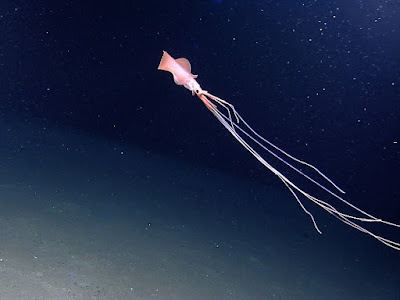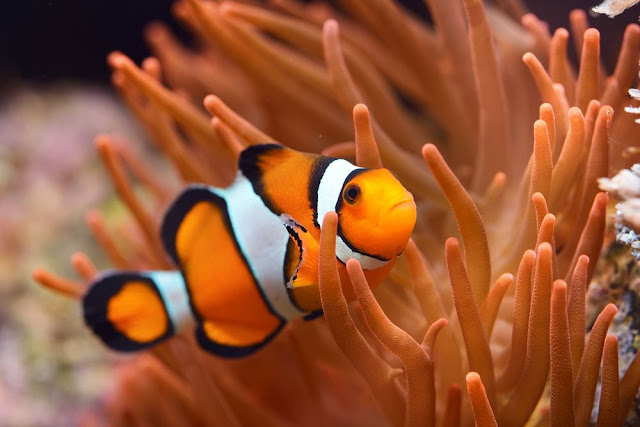Researchers Find the World's Deepest Dwelling Squid
When a team of subsea explorers completed the deepest ever dive to a shipwreck earlier this year, the news was broadcast around the world. A team from Caladan Oceanic found the USS Johnston, which sank during an intense naval battle in 1944, to be astoundingly well-preserved, its guns still pointing in the direction of the enemy. A few days before making their record-setting trip, however, the explorers had carried out another descent to the seafloor, a dive that ended up being a few kilometers off the mark.
Though they failed to find the wreck that day, they did find something else.
Once footage from the excursion came in, Alan Jamieson, a deep-sea researcher from the University of Western Australia, sat in his office aboard the expedition ship scrolling through frame after uneventful frame, searching for anything that might be of interest.
The two-person submersible, piloted by Victor Vescovo, the American investor who founded Caladan Oceanic, appeared to have glided past little more than mud—and more mud—on its long journey through the Philippine Trench, which lies 6,200 meters below the surface, east of the Philippines.
But then, for just a few seconds of video, something strange moved in the distance. Jamieson rewound and played the short sequence again. And again.
On his screen, caught in light cast by the submersible, was a hazy yet recognizable form: a squid. It was cruising just above the seabed one and a half kilometers deeper than anyone had ever seen a squid before.
Jamieson quickly cut a clip of the footage and some still images, and sent them to Mike Vecchione, a zoologist at the Smithsonian Institution. From the outline of the creature, Vecchione could tell this was a magnapinnid. Also known as bigfin squid, because of the large fins that protrude from their mantles, magnapinnids are among the most mysterious squid in the world.
“They’re really weird,” says Vecchione. “They drift along with their arms spread out and these really long, skinny, spaghetti-like extensions dangling down underneath them.” Microscopic suckers on those filaments enable the squid to capture their prey.
But the squid that Jamieson and Vecchione saw in the footage captured 6,212 meters below the ocean’s surface is a small one. They estimate that its mantle measured 10 centimeters long—about a third the size of the largest-known magnapinnid. And the characteristically long extensions observed on other magnapinnids were nowhere to be seen in the video. That could mean, says Vecchione, that this bigfin squid was a juvenile.
The discovery is fascinating because of what it implies, says Bruce Robison, a deep-sea ecologist at the Monterey Bay Aquarium Research Institute. Squid, being top predators, rely on a complex ecological web, and so to find a squid at these depths suggests that many other life forms must be down there somewhere to support it, he says.
If bigfin squid do commonly inhabit this part of the ocean at various stages of life, that could make them vulnerable to certain human activities. “The sediment plumes and disruption from seafloor mining could have a real impact on these populations,” says Robison.
Footage of the wreck of the USS Johnston has left Jamieson with similar concerns. Though the trench plowed by the stricken ship was made 77 years ago, “it looks like it came down yesterday,” he says.
There are signs of sea life in nearby sediment, but not within the gouge itself, suggesting that when the seafloor at such depths is disturbed—as it would be during mining operations—it can repel marine organisms for decades.
Finding a squid so deep suggests that there is a lot to protect in these poorly understood reaches. Jamieson, for one, says he is always trying to challenge the perception that the deepest parts of the ocean are devoid of life.
This isn’t the first time Jamieson and Vecchione have documented a species at extraordinary depths. In 2020, the pair published a study on the deepest ever sighting of an octopus, which was also made possible by Caladan Oceanic’s expeditions. And, around the same time as they found the bigfin squid, the company also captured footage of a jellyfish in the Philippine Trench at an astonishing depth of 10,000 meters.
“We saw the deepest jellyfish ever,” says Jamieson, who cannot contain a laugh of excitement. He’s now working on a paper that will formally describe that discovery, too.




Comments